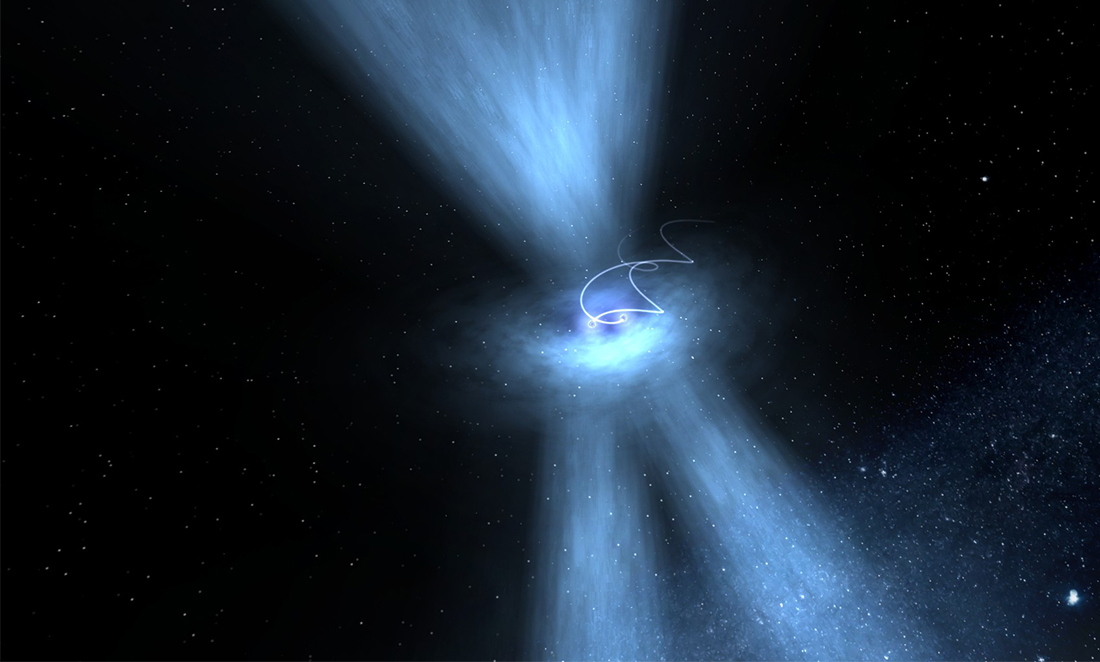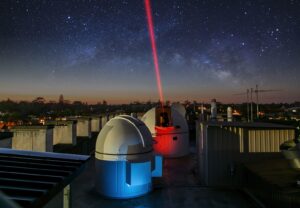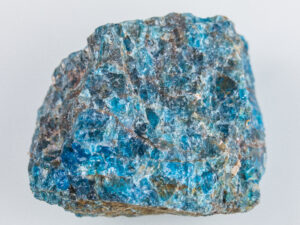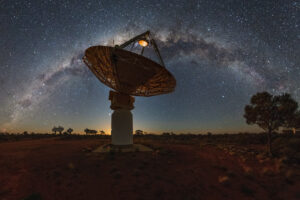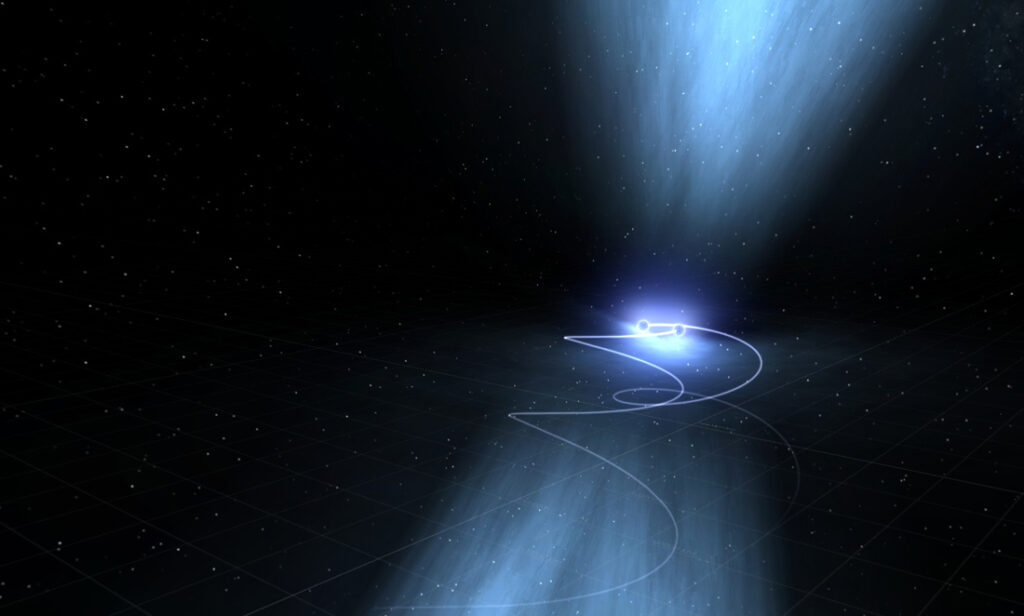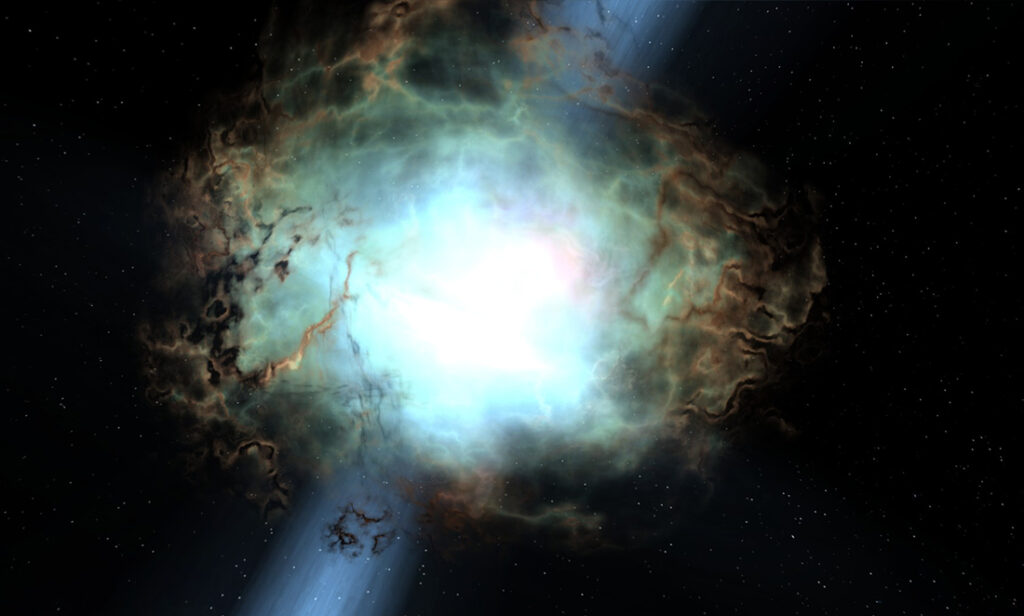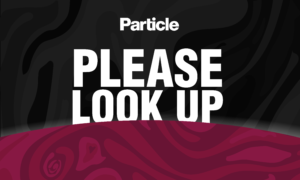About 130 million years ago, and just as far away, two of the heaviest objects in the universe collided.
They’re called neutron stars, and they’re the ultra-dense corpses of enormous stars. Their masses were so large and their encounter so violent that it shook the universe and scattered pure gold across space.

Last year, for the first time in history, humans were able to watch one of these gold-generating collisions—from right here in Western Australia.
Interstellar alchemy
It’s surprisingly hard to build an atom, especially one as heavy as gold. Elements are defined by the number of protons in their nucleus. To build heavier elements, you have to add more and more protons. Since protons have the same charge, pushing protons together takes a lot of energy—a bit like pushing the same poles of two magnets together.
Here on Earth, we can fuse hydrogen (the lightest element) together to make helium (the second-lightest). Some intrepid folks even build fusors in their garages to do exactly that, but it takes a lethal amount of electric current to get the reaction going.
The same fusion process takes place in the core of a star. The heavier the element involved, the more protons you have and the more energy you need to join nuclei together. But the energy of an entire star still only gets you iron.
To get heavier metals like gold, you need some of the most powerful events in the universe. Like, for example, the neutron star collision observed by the Zadko telescope at Gingin last year.
An early warning system for space
So if these events are so powerful, how come we’d never seen one until last year?
The simple answer is that space is big, and it’s hard to watch all of it at once. Of course, that won’t stop astronomers trying.
The first thing you need is telescopes spread all over the world. These events could come from any direction, so having remote access to telescopes around the world is crucial. And as we already know, WA is a great place to watch the sky.
The second thing you need is a little bit of warning about where to look. Thanks to a cutting-edge international physics experiment, we finally have that warning. Gravity waves, for a whole bunch of reasons, tend to reach us before the light from these collisions. These waves give us the warning we need to find and point the right telescopes in the right part of the world at the right part of the sky.
Sometimes, like last year, WA just happens to be the right place at the right time. And we have plenty of physicists working on making future discoveries possible too. Next time you’ve got a free weekend, why not head up to the Gravity Discovery Centre and pay them a visit?



